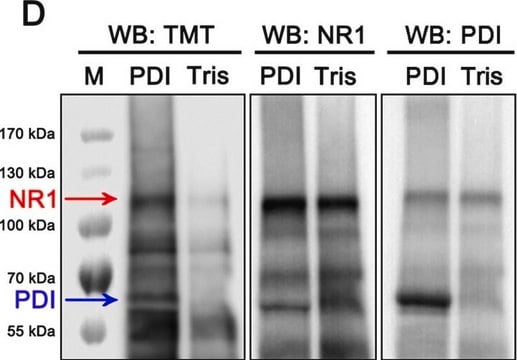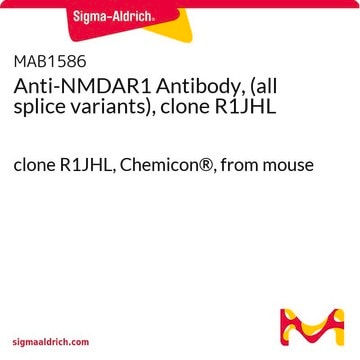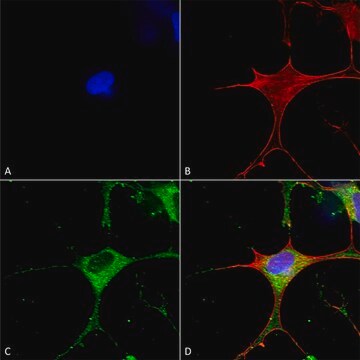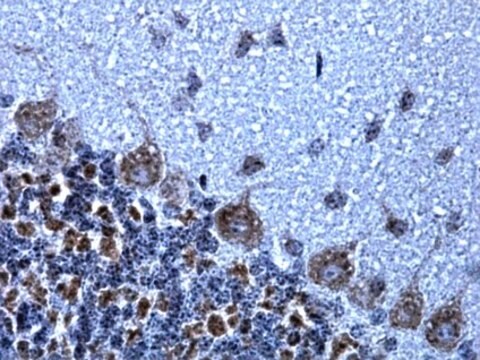MAB363
Anti-NMDAR1 Antibody, clone 54.1
clone 54.1, Chemicon®, from mouse
Synonym(s):
N-methyl-D-aspartate receptor channel, subunit zeta-1, N-methyl-D-aspartate receptor subunit NR1, NMDA receptor 1, glutamate [NMDA] receptor subunit zeta 1, glutamate receptor, ionotropic, N-methyl D-aspartate 1
About This Item
Recommended Products
biological source
mouse
Quality Level
antibody form
purified immunoglobulin
antibody product type
primary antibodies
clone
54.1, monoclonal
species reactivity
rat, monkey, human, Xenopus
manufacturer/tradename
Chemicon®
technique(s)
ELISA: suitable
immunocytochemistry: suitable
immunohistochemistry (formalin-fixed, paraffin-embedded sections): suitable
radioimmunoassay: suitable
isotype
IgG2a
NCBI accession no.
UniProt accession no.
shipped in
dry ice
target post-translational modification
unmodified
Gene Information
frog ... Grin1(780048)
human ... GRIN1(2902)
rat ... Grin1(24408)
rhesus monkey ... Grin1(574380)
General description
Specificity
Immunogen
Application
A previous lot of this antibody was used in IC.
RIA:
A previous lot of this antibody was used in RIA.
ELISA:
A previous lot of this antibody was used in ELISA.
Immunohistochemistry: 1:500-2000, on 2-4% paraformaldehyde fixed tissue: typically free-floating, frozen or vibratome sections 24-48 hours at 4°C. Paraffin embedded formalin fixed sections have also been used at similar dilutions and incubation times. Care should be taken not to over fix the tissues. The clone 54.1 has been used for both light and electron microscopy.
Western blot:
1:500 with 50 migrograms/lane of material. Recognizes a 103-116kDa band.
Optimal working dilutions must be determined by end user.
Neuroscience
Neurotransmitters & Receptors
Quality
Immunohistochemistry(paraffin) Analysis:
NMDAR1 representative staining pattern/morphology on rat spinal cord at 1:200 dilution. Immunoreactivity is seen as integral membrane and nerve fiber staining of neurons. Frozen section. IHC -Frozen Staining Examples: Rat Spinal Cord
Target description
Physical form
Storage and Stability
Analysis Note
Rat brain and spinal cord tissue
Other Notes
Legal Information
Disclaimer
Not finding the right product?
Try our Product Selector Tool.
Storage Class Code
12 - Non Combustible Liquids
WGK
WGK 2
Flash Point(F)
Not applicable
Flash Point(C)
Not applicable
Certificates of Analysis (COA)
Search for Certificates of Analysis (COA) by entering the products Lot/Batch Number. Lot and Batch Numbers can be found on a product’s label following the words ‘Lot’ or ‘Batch’.
Already Own This Product?
Find documentation for the products that you have recently purchased in the Document Library.
Our team of scientists has experience in all areas of research including Life Science, Material Science, Chemical Synthesis, Chromatography, Analytical and many others.
Contact Technical Service








